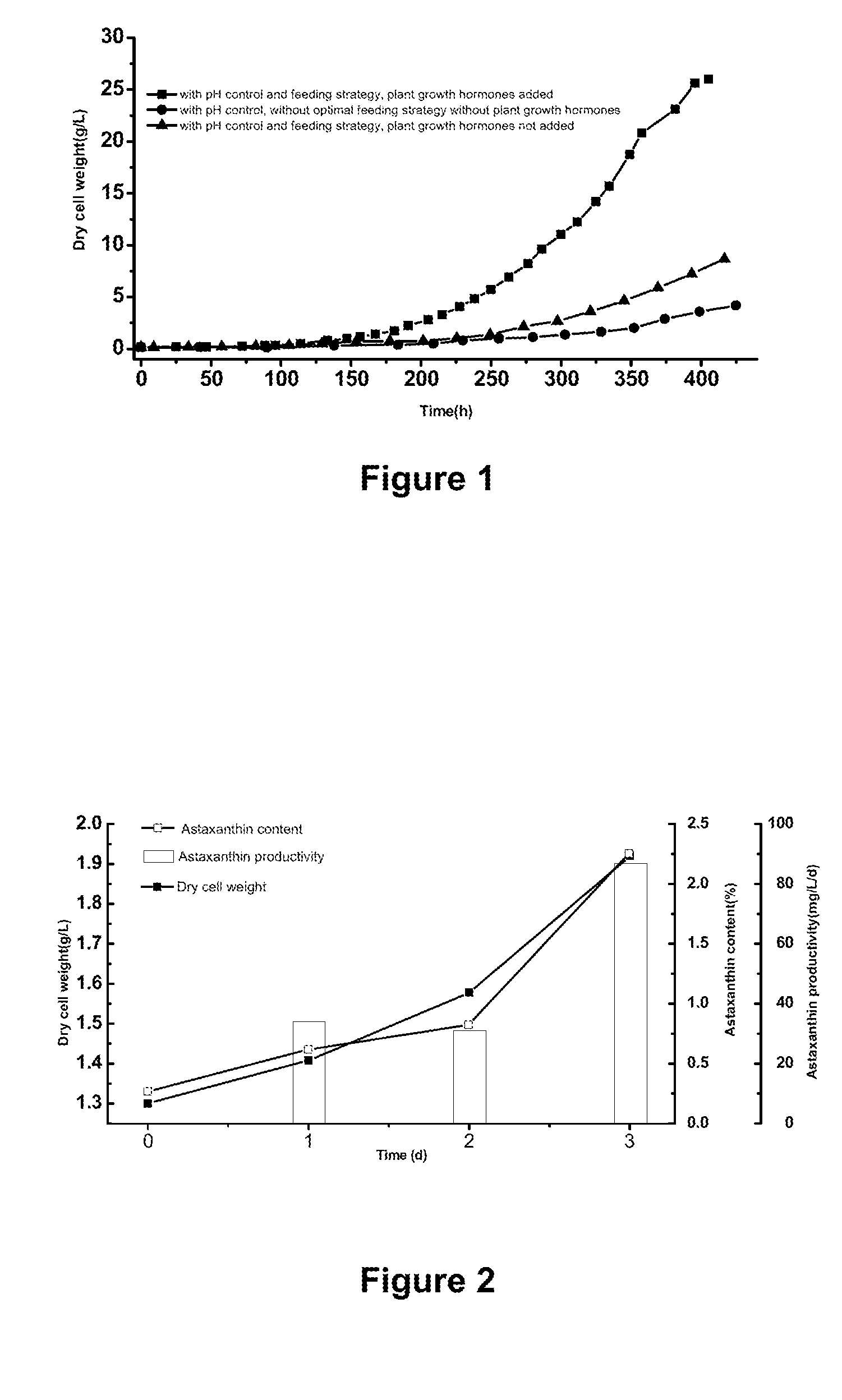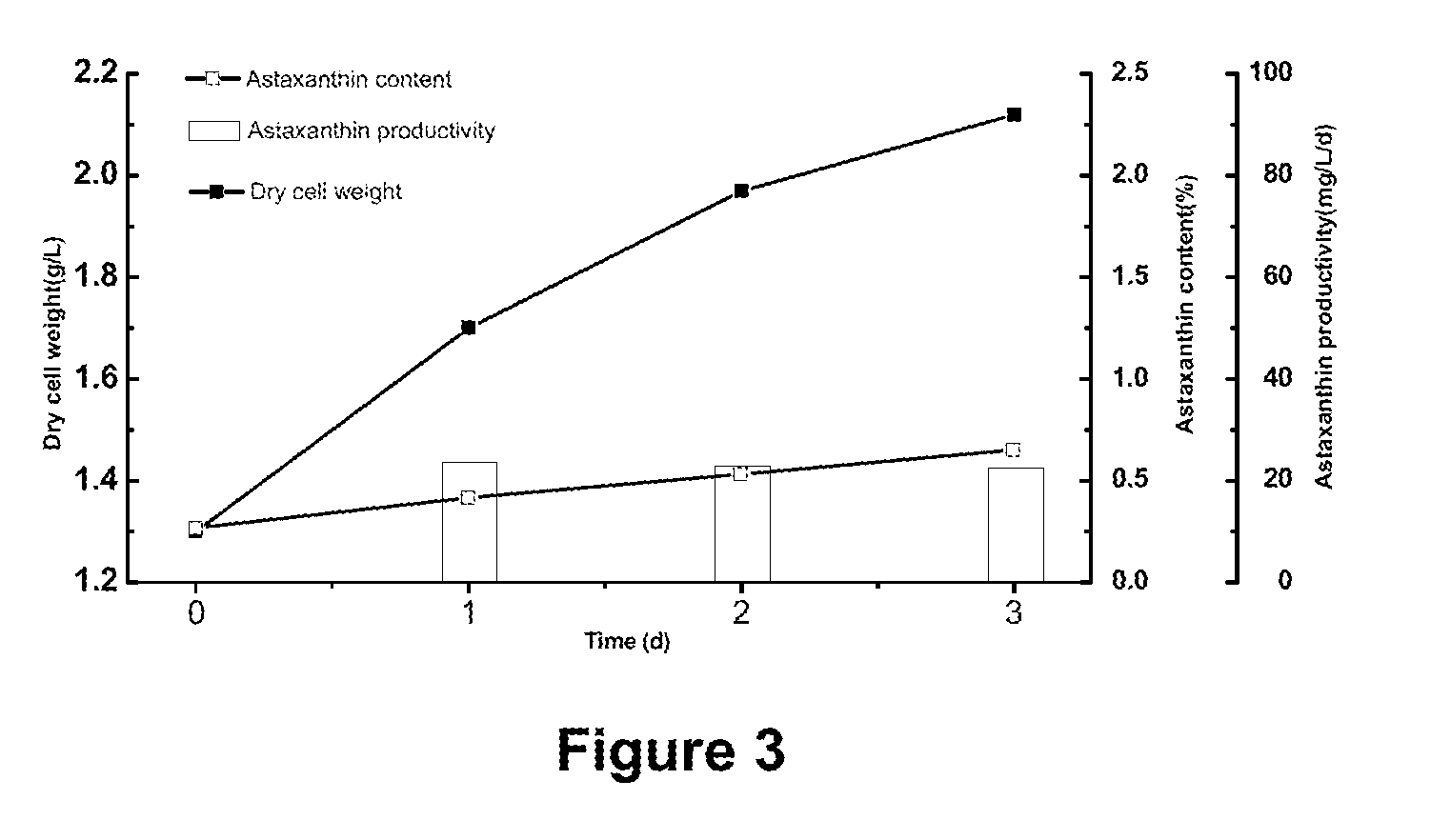Method using microalgae for high-efficiency production of astaxanthin
a technology of astaxanthin and microalgae, applied in the field of microalgae biotechnology, can solve the problems of photoautotrophic cultivation of microalgae, slow growth rate, low cell density, etc., and achieve the effects of improving production rate, reducing production costs, and high quality
- Summary
- Abstract
- Description
- Claims
- Application Information
AI Technical Summary
Benefits of technology
Problems solved by technology
Method used
Image
Examples
example
[0112]The following heterotrophic medium and water of are added into a 5 L bioreactor to a volume of 2.5 L, and then sterilized by steam. When the temperature is reduced to 25° C., Haematococcus pluvialis seeds are inoculated for heterotrophic cultivation. The dissolved oxygen is controlled to have not less than 5% of air saturation concentration by adjusting aeration and agitation.
[0113]During the heterotrophic cultivation, the pH value is maintained at 7-8 by controlling the rate of continuous flow of feeding medium. The feeding medium includes nutritive salts, such as organic carbon source (e.g. sodium acetate), nitrogen source (e.g. CaNO3, KNO3), inorganic salt and plant growth hormone. These added nutritive salts are concentrated in the above-mentioned corresponding medium to prompt the growth of microalgae. Meanwhile, the content of carbon, nitrogen and / or phosphorus should be timely monitored in order to adjust the content of these materials in the feeding medium appropriatel...
PUM
 Login to View More
Login to View More Abstract
Description
Claims
Application Information
 Login to View More
Login to View More - R&D
- Intellectual Property
- Life Sciences
- Materials
- Tech Scout
- Unparalleled Data Quality
- Higher Quality Content
- 60% Fewer Hallucinations
Browse by: Latest US Patents, China's latest patents, Technical Efficacy Thesaurus, Application Domain, Technology Topic, Popular Technical Reports.
© 2025 PatSnap. All rights reserved.Legal|Privacy policy|Modern Slavery Act Transparency Statement|Sitemap|About US| Contact US: help@patsnap.com



